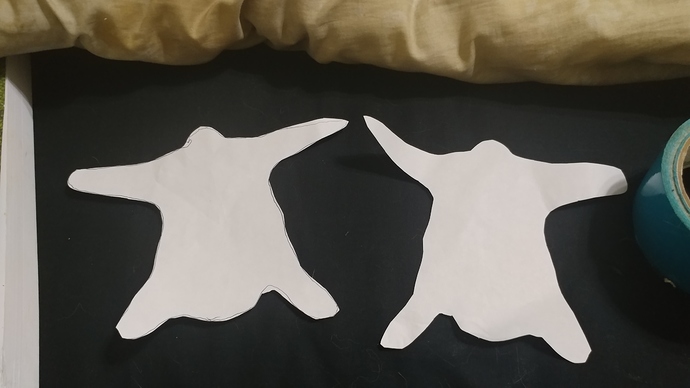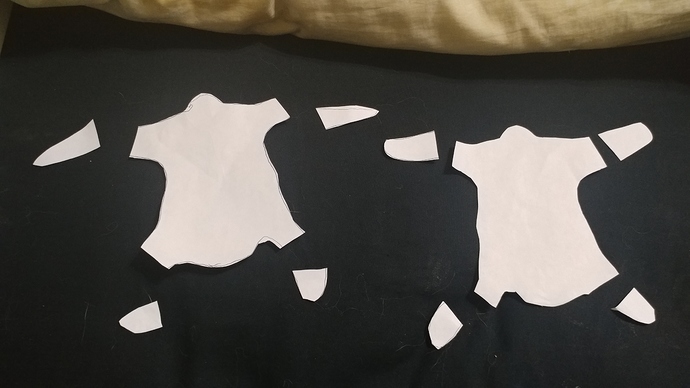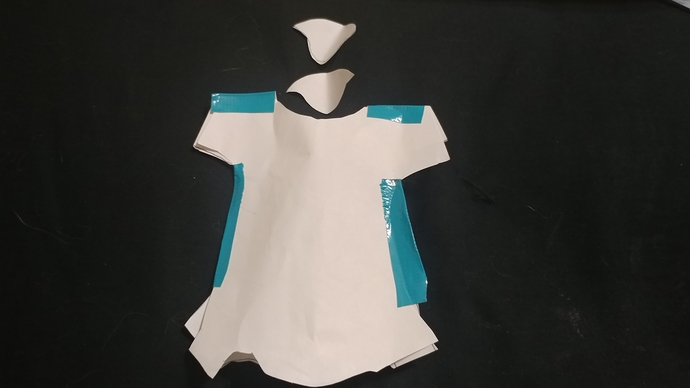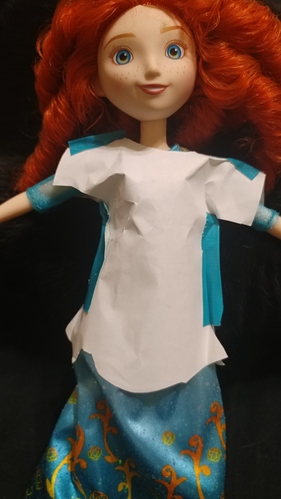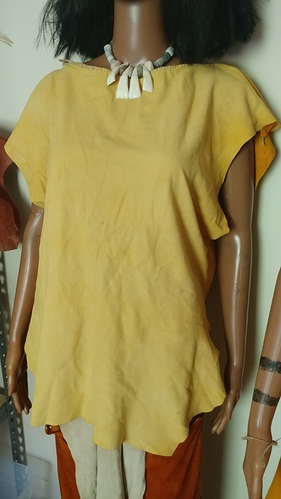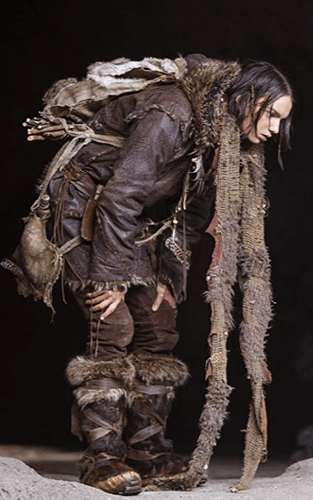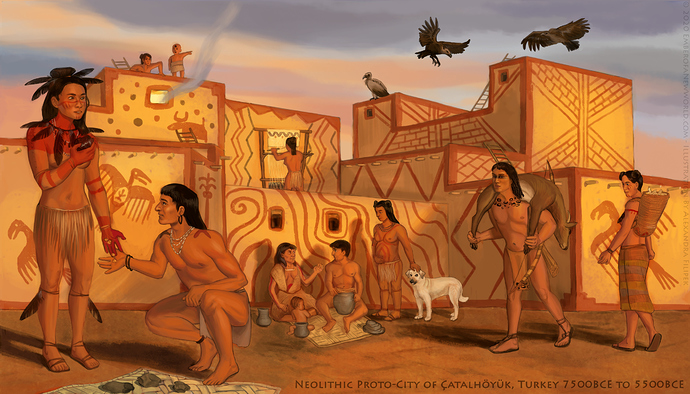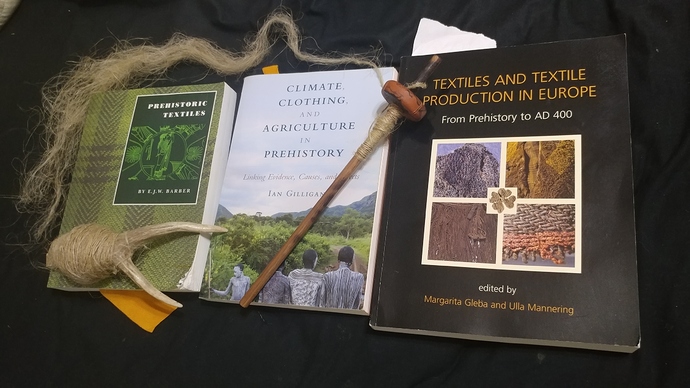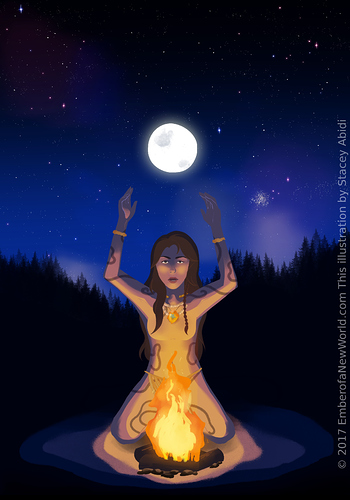I would also like to see that film, but in the Netherlands it cannot be seen on Netflix
i dont see him try a vpn but nothing to see any tips?
Maybe do a discord movie night when I get back home?
got it am in canada now haha gona whats the movie now thanks…
haha no here it is only from 28 July to watch haha hmmm
10,000 BC, in my opinion, is just a fantasy tale. The only think historical about it is that it had humans, which did exist then. That’s about it lol
I would like to see the clothing. Hopefully, they made the clothing accurate and also complex.
Der Mann aus dem Eis (The man in the ice) was a much better film. It was about Otzi the Ice Man. It had a lot o problems, but it was still fun. I did a live-tweet when I watched it discussing some of the issues:
https://twitter.com/Antiproton_com/status/1024116442445307904
I have not watched Alpha, but looking at the images online for it, I already see a few issues.
I will need to watch it for a good, solid opinion, of course lol
- The people are the wrong skin color. They are white and should be quite dark. The genes alleles frequency for white should not have been selected for yet, and very rare.
- The leggings should be separate with loincloth, but I see no cloth (it could be too short to see) and the “legging” in the clips I see move more like pants. Pants were not a thing then. They didn’t have them.
- His coat is really oddly put together. It should be made from two large hides (like my below images) but it looks more like dozens of scraps. While you could do this, it would be very weak in construction, not as warm, and much harder to make/maintain.
You take two hides, perhaps deer or elk.
You cut the arm/leg parts off. These can be used other other things.
You cut the neck hole to fit the person and then awl/sew the sides and top. You can add more sewing work for decoration or to strength the edges. Evidence from burials shows a low of decorations from beads and teeth.
It fits nicely and has naturally occuring sleeves lol
Here is a lightweight version I made for a Neolithic outfit (no decoration added, yet). For the glacial periods, it might have been much thicker with fur.
Notice: She has proper leggings and loincloth, which is how that should look in the movie.
Best I could find for the clothing but I was able to find the Era (?)
Plot. In Upper Paleolithic Europe 20,000 years ago, a small tribe of hunter-gatherers prepare for a hunting expedition to hunt for the coming winter’s food. Tau, its chief, trains his teenage son Keda, accepting him and another boy to join the hunting party.
That’s a nifty pic, for sure. It has a few issues:
Well, the scarf is likely out. While they likely woven in that time period, you probably wouldn’t find anything soft enough using materials common enough to be a scarf. Something like lime bark or other bast fiber. Nasty against the face lol
The leather is cut wrong. It’s modern style weighted heavily on the seems, something you wouldn’t find back then. The water jug’s cap is modern ad I am unsure of the brown, glossy ribbons on the boots.
Lastly, the person is white, which they should not be.
Might I recommend a few alternatives:
Alpha is supposed to be the upper Paleolithic, circa 20,000, so near the end of the upper P.
I don’t disagree with the technical aspects of the Outfits and completely agree unless the actor is a genetic abnormality with regards to skin tone he should have been more dark bronze to dark olive at the 20k BCE mark unless they are from a later migratory group or a one off.
The entire debate / conversation is based in error that is the scourge of the entire archaeological process is they treat discoveries as PROOF and a new immovable fact. When in reality its part of the proof but not an absolute, because your looking X years in the past and missing ALOT of the story and most of the details. Most recent examples of rapidly changing position is the position with Neanderthals, language, art, family units, faith etc. As little as 50 years ago they were grunting violent animals that we modern sapiens hunted to extinction. Today we are accepting the fact that they weren’t so dissimilar to early Sapiens that they were incorporated into our family units so much so that their DNA is found in a hefty portion of our current population.
 With all that said its some of the closest clothing I’ve seen so far from a Big Picture Studio for the environment (looks like Glacial Plains, Plains Bison hunt) and skill set that these people would of had. To base our entire understanding of their clothing design and assembly on one frozen corpse ( Ötzi 3400 - 3100 BCE) from the Austria and Italy or another single corpse/cave even frozen and preserved for recovery. Kinda does a disservice to the people of that age - all you need to do is look at adjacent north american tribes and the differing of their clothing especially at northern latitudes Dene people vs Moose Cree vs Caribou Inuit and it gives you an idea of what i mean all three of these groups literally border on each others ancestral ranges and yet developed completely different clothing in the broad strokes.
With all that said its some of the closest clothing I’ve seen so far from a Big Picture Studio for the environment (looks like Glacial Plains, Plains Bison hunt) and skill set that these people would of had. To base our entire understanding of their clothing design and assembly on one frozen corpse ( Ötzi 3400 - 3100 BCE) from the Austria and Italy or another single corpse/cave even frozen and preserved for recovery. Kinda does a disservice to the people of that age - all you need to do is look at adjacent north american tribes and the differing of their clothing especially at northern latitudes Dene people vs Moose Cree vs Caribou Inuit and it gives you an idea of what i mean all three of these groups literally border on each others ancestral ranges and yet developed completely different clothing in the broad strokes.
Btw that Deviant Art on on the end that didn’t auto-load is AMAZING! Shows off the Bead/Shell work, jewelry and tattoo/body art.
Archaeology has made mistakes, like any science. The power of science is the constant correction and refinement, which is why we change over time.
When I said the clothing was wrong, I was not basing that off of Otzi (he’s from an entirely different time period with different tools and tech). Let me explain some of how the clothing is understood:
-
Art We can look at their art. Most doesn’t show clothing (this is likely artistic or utilitarian, not a reflection of the makers as their climate was too cold for nudity outside of the hut or summer). Sometimes, their figurines show iconograhic markings hinting at clothing. For upper Paleo, we have SO little of this. Nearly zero from men and, though plenty of women, they are typically nude and not likely representative of daily wear.
-
Tools We can look at their tools to figure out what they could have made. Scrapers, needles, awls, etc, all survive. Experimental archaeology allows us to use modern versions of these tools and examine them before and after use to determine how wear forms on them. We can then examine ancient tools to learn exactly how they were used.
-
Mats Using the materials they used, we can experimentally see what worked best and why. For example, you can sew leather many ways, but only some work with their tools and in the ways they prepared leather.
-
Evolution Clothing evolves as humans come up with new ideas or experience new pressures. For example: textiles became a major clothing item in the Neolithic due to the Holocene inter-glacial period, which is hotter/wetter, conditions we have learned often lead to the development of textiles. Moreover, we can look at what little bits of data we have for each period and climate, then effectively “solve for x.” For example, if every 1000 years for 3000 years, we see a garment getting smaller due to heat, we can make a hypothesis that the 4th 1000 year period, for which we don’t have good evidence but we know it was warmer, likely continued this trend. This would be a hypothesis as it has a lot of backing data but remains unproven.
-
Comparison Cross cultural contemporary ethnographic analysis (something I like) is very important. It allows us to look at modern cultures or older cultures for whom we have solid data, and compare them against ancient ones in similar states to see how humans did things. Humans have a remarkable similarity in how we solve problems. To be fair, this is not always the case. A major issue is separating cultural components from environmental/sociological pressures. For example, culture A (who live now) and culture B (a prehistoric culture) have nearly the same environmental factors, group sizes, etc. A dozen data points match. So, culture A shaves their heads. Rock are from culture B shows no hair depiction… Does A do this for local cultural reasons or is there a pragmatic reason which B may also have come to (or did they just not draw hair)? As you can see, this is a VERY complex task, but doable.
I used this technique comparing Chaco Canyon ancestral pueblo culture to Catalhoyuk when writing my 2nd and 3rd novels. The same two cultures were used by Dr. Ian Hodder, the director of the Catalhoyuk project.
-
Grave Goods When people die, they are sometimes buried with their stuff. You get inhumed into a grave with your clothing, which is covered in hundreds of beads. Over time, you clothing and body decay away, but your beads slowly sink into the ground in almost exactly the layout they had on the clothing. Several such inhumations have been studied and they give good information on how the clothing was made. For example, we find lots of beads at the bottom, between the legs, and headed that way from the sides. This could point to a long shirt which narrows in the front. This is exactly what you expect from a 2-hide shirt, like the one I explained earlier.
-
Experimentation A key task is to make and wear the clothing. I made entire sets of Neolithic clothing spent weeks/months wearing it to see how it works. For example, I planted, harvested, processed, and spun flax in my yard wearing period clothing. You quickly learn that leggings are NO GOOD when harvesting as the bending causes them to run down your legs. You wouldn’t find this out until working for at least 30min for the sweat to build up! You learn that leggings are also bad when processing due to material getting in there. You learn that leggings are a must when planing due to the cold, but that you would be barefoot so you don’t mess up the cast seeds. lol I’ve spent entire nights in the forest wearing LBK culture clothing to see how it held up. I was hoping no one saw me as it’s not exactly the most covering of clothing, but it holds up!!! This is the best way to learn how things were used, once you have a solid foundation of what they likely wore.
So, you are correct that there is a lot of unknown.
Guessing is made, but these are often very qualified guesses with a significant amount of data to back them up. I’ve read entire papers written on just the analysis of a few cm of thread found. We learn new things all of the time. For example, we didn’t know that Mesolithic humans and their paleolithic predecessors were dark skinned (quite dark) until we finally got several sets of DNA and sequenced them. We can actually see that they didn’t have the alleles for light skin (and wouldn’t until the early Neolithic.)
I do plan to see Alpha and hope it’s okay. I forgive them for the skin as it’s HARD to find European-looking folk with dark enough skin. But I am a stickler for the clothing
If you are interested in prehistoric clothing, here are some good books!!!
Prehistoric Textiles has a bit in it about string skirts which I think is inaccurate and have discussed in public at length lol It’s otherwise great!!! A must.
Ian Gilligan’s Climate Clothing and Agriculture in Prehistory gets into why we chose to wear clothing and the pressures which influenced it. I’ve spoken to him several times and he’s a neat fellow. It’s a really good book if you like the “why” more than the “what”.
Textiles and Textile Production in Europe is great, but a little weak on the Neolithic. One of the authors/editors, Ulla Mannering sent me all kinds of amazing info on Egtved Woman for my research!
Excellent and well reasoned post. My point with Ötzi was when he was discovered it was the definitive proof that this was how clothing and tools were made in this period. Which is wrong this is an example of how that particular clothing and tools were made. Theres no explanation of the level of the crafts person who made those tools / clothing if they were even local to the site of his body or if he was from some far away place etc. 3500BCE there most certainly were trades people who if not their sole task were more then 50% focused on their tradecraft. I feel my point might be getting lost in the Rush’s here. I agree with you Lotus but the general mindset with regards to clothing assembly use of materials, tools, their construction etc. For example, making bone tip’s for something like an arrow or atlatl point is drastacally different when breaking deer bone, vs Elk Bone vs Bison bone and the methods although similar with reconstruction through experimental archeology as they are not from Paleo era animals density of bone etc is different. And hats off to you for diving into actually experiencing that clothing and the pros and cons vs a modern mindset on them. Come along way with even the basics.
Also, I should point out a few common errors with prehistory.
These errors are commonly believed true, but are not. Worse, even though the archaeological data doesn’t support them and the experts in the relevant sub fields do not promote them, you will see actual archaeologists make these errors!
-
Depict prehistoric people in boots/shoes! In fact, other than in the cold weather, footwear was likely uncommon due to it’s cost of time to make and quickly wearing nature. Most people would be barefoot.
-
The Neolithic brought textiles and farming! Nope, farming existed in the Mesolithic and maybe the upper paleolithic, as did textiles. However, they were very much side activities and not as advanced. Textile and farming industry was not setup until the Neolithic.
-
Europeans had darker, but not that dark of skin. Nope. Multiple data points show that skin color didn’t likely change until the early Neolithic. Also, you would have cultures with various levels of coloration as it started and the 3 primary single nucleotide polymorphisms showed up.
-
Neolithic people wore textiles, mainly. Nope. We have no evidence for this and plenty against it. We can see how big their looms were by posthole measurements and reconstructions, as well as loom weights. They likely used limited textiles until the middle if not the end of the Neolithic.
-
Depict everyone wearing the same thing! This is a common problem with prehistoric depictions. Looking at nearly every culture that exists, we see diversity in dress, even when a theme exists. People are often quite unique.
-
Women didn’t hunt, just work and babies! Nope. In fact, analyzing contemporary tribes shows that women perform the majority of hunting in many cases. The problem is that many associate hunting with large animals. In fact, the bulk of animal intake comes from small game, fish and fowl, which women are often tasked with getting. This is also why you don’t see the injuries in the bones of the women.
-
They had similar ideas to us on age, gender, relationships, families, etc. Nope. For example, having many more than 2 genders is very common in much of east Asia, parts of Africa, and much of the indigenous American cultures. I grew up on the Navajo reservation where there were 4 genders, for example. Concepts like these cannot simply be assumed to be the same, though some trends can be exacted to be similar.
There are lots more, but those are a few. lol
I hope no one is saying that Otzi is proof of anything but Otzi.
In fact, he is Chalcolithic, not Neolithic. He should have had some textiles, but did not. We know they existed at that time.
Now, a lot can be derived from his garb.
Oddities:
- No textiles
- Really short loincloth (you want long in the cold)
- Clothing made from strips, rather than larger bits
- No cold weather longshirt
There are MANY explanations of why this might be. Otzi is likely a good data point to give us a nice idea. He seemed in okay health and had even gotten tattoos, perhaps for his deeds or for medical reasons (given where they were), so I doubt he was some mountain man lol
I’ve done a few experiments with winter clothing and they have all worked out pretty well. My full winter outfit was good to work in for ovr an hour in -10C (~15F) weather a few years back! Read Gilligans book to learn why this eventually becomes a problem due to sweat and why we assume clothing was not likely worn very much in long houses/huts lol
I would also add diet to the misconception: Paleo and Mesolithic people were malnourished and always starving. In reality, before the first big settlements and mass agriculture, people had a diverse diet and were actually quite well fed. Mass starving only start when societies begin to really on one major plant (rice, corn, wheat) and the harvest fail for any reason.
Yes! That’s a point I found quite interesting when reading on the topic: settling down in the Neolithic and starting mass agriculture actually meant a tougher life with a lower overall quality. The advantage was that the ceiling of what could be achieved in the long run was raised and civilisation as we know it could start - but the floor was lower. Fascinating.
The Neolithic was quite a step backward in nutrition, and shorter life expectancy shows this quite well. Also, they never show the Paleo/Meso’s eating the lovely stuff they ate. Fish, nuts, berries, tubers, fruit, etc. They ONLY show them eating megafauna lol
Yes! I still remember fusarium destroying 2/3 of my flax crop in 7 days!
What if this were my wheat and I had little stores?
Can you tell us more about what fusarium is? a disease?

